Home » Waterfowl Hunting » The Complete Guide to Wood Duck Hunting
The Complete Guide to Wood Duck Hunting
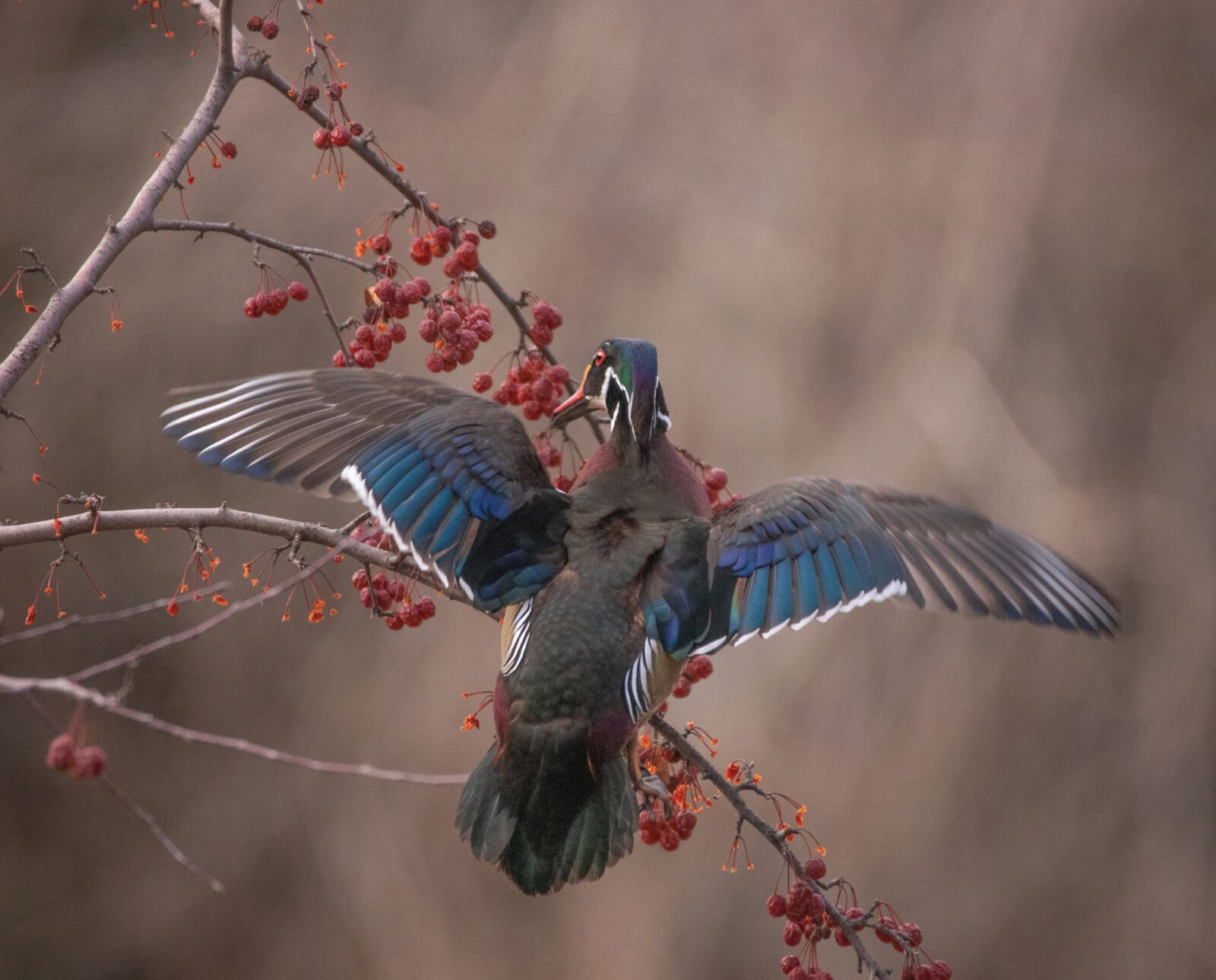
Mike Adams is an outdoor writer, wildlife biologist, and educator…
Tips for scouting, hunting, calling, jump shooting, and decoy spreads for hunting wood ducks this waterfowl season
My earliest memory of hunting features a cool fall breeze skating across a remote forest lake. The wind swirled in the canopy, and yellow oak leaves drifted in the wind like a thousand deflated balloons. One landed at my feet as I paddled in a beat-up fiberglass canoe with my dad. He let me skip school that morning, and I remember the paddling keeping me awake. The stars glimmered, and the silhouettes of Atlantic white cedars reached up to them like giant black mountains. A great horned owl echoed from some distant perch, and a beaver slapped its tail against the water right off the bow of our canoe. The noise broke the forest’s serenity, sending my body and our boat into a full-blown reactive jolt.
Listen to more articles on Apple | Google | Spotify | Audible
By sunrise, I figured out what that whole morning was all about. Whistling wings ripped through the trees, and primordial squeals rang across the water. This trip was no predawn nature tour. The birds flew high against the pink morning sky, and a few broke off over our decoys. As I could make out their brilliant shades of green, blue, white, and chestnut, my dad rang off a few shots.
From then on, I spent every October on some remote lake looking for wood ducks. Over the years, I figured out that hunting these birds is a real treat, not just for the scenery and not just for the sheer beauty of a wood duck in hand, but for the challenge of it all. It takes knowledge, wit, and a whole lot of tenacity. The best part is, there are few things better than spending a morning watching the world wake up on a backcountry wood duck pond. When the sun begins to pierce through the trees and wings start cutting through the wind, you’ll be glad you set that morning alarm. For those of you who haven’t experienced it yet, here’s your opportunity. This article is the complete guide to hunting wood ducks.
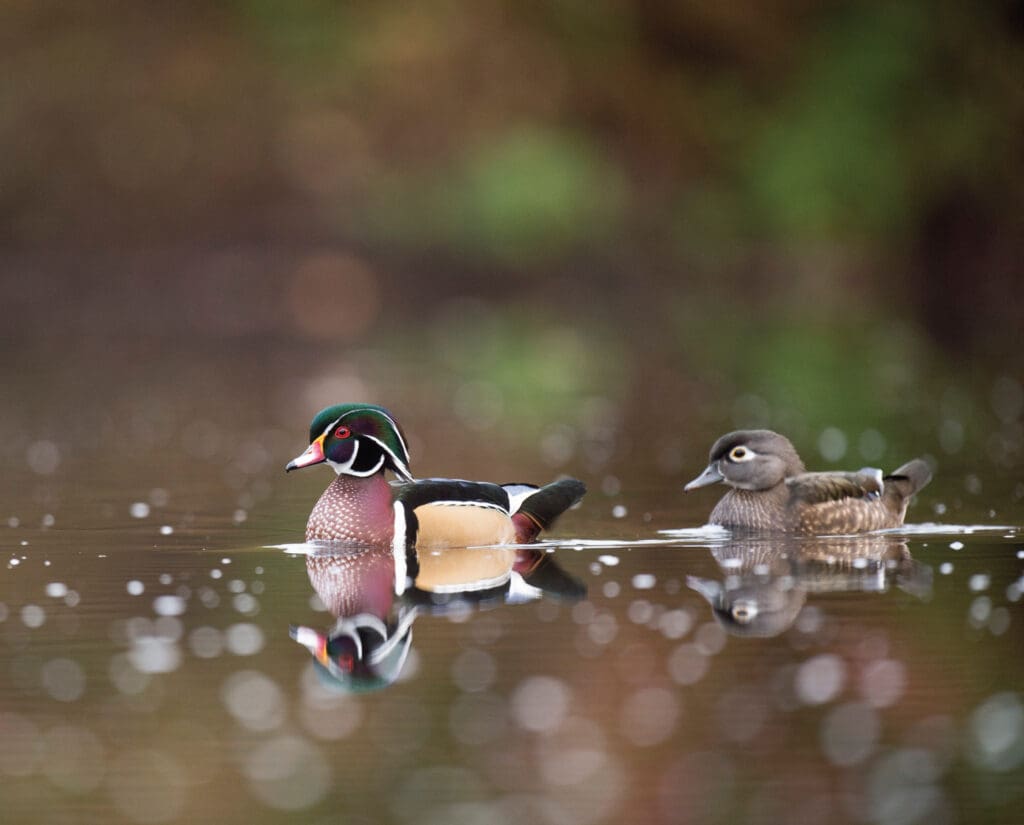
Scouting for Wood Ducks
Finding wood ducks boils down to finding high-quality wood duck habitat. Wood ducks prefer thick cover over flooded timber, usually on water bodies such as woods-enclosed lakes and ponds, although they can be found on marsh edges that butt up to a forest. Forest creeks, freshwater marshes, and fallen trees over open water also provide some of the best wood duck haunts.
Finding a wood duck honey hole requires boots on the ground and a paddle in the water. Wood ducks are common year-round residents in many areas, meaning you can get out in August or September to look for them. One of the best indicators of wood duck habitat is beaver sign. Look for chewed trees, beaver dams, and beaver lodges. Wood ducks love backwater beaver sloughs and even perch on their dams and homes.
Another way to find wood ducks is to locate their favorite foods. Unlike most species of ducks, wood ducks prefer nuts. In fact, in the winter, acorns can make up over 99 percent of a wood duck’s diet. Nuts such as acorns are calorie-packed and fatten the birds up quickly for brutal winters. Find flooded areas rich with timber, specifically nut-producing timber like oaks and beeches, and you’ll likely find wood ducks.
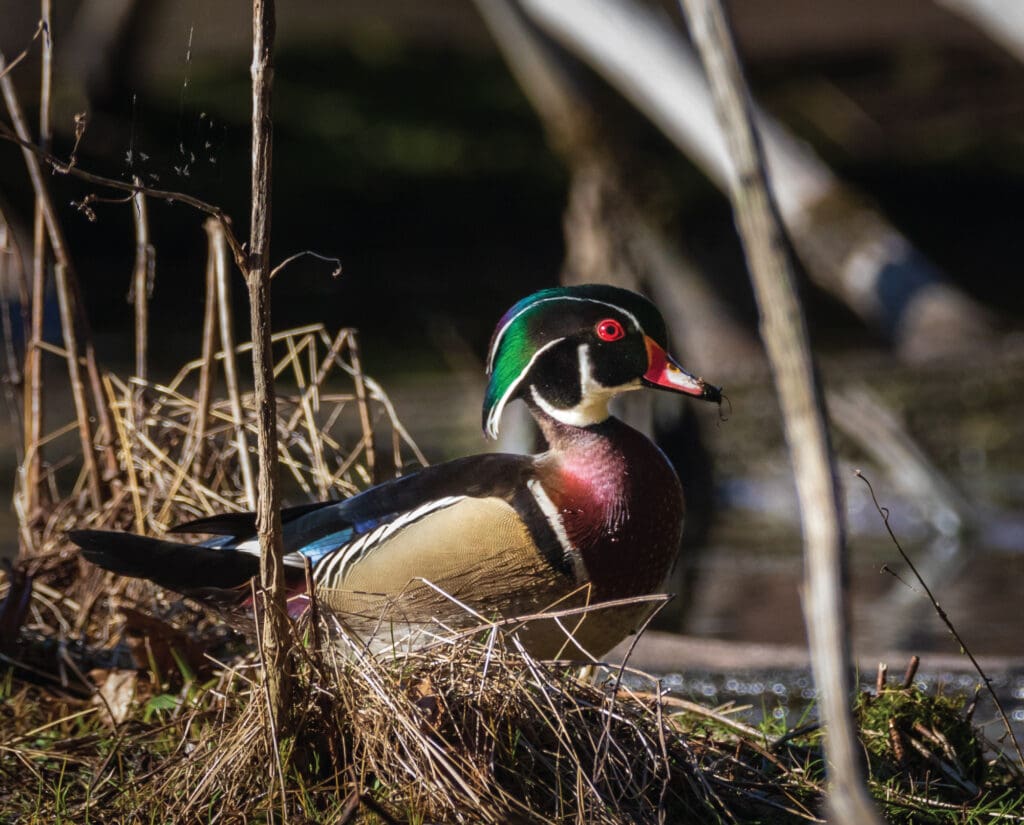
Use Duck Calls to Hunt Wood Ducks Like Turkeys
The coolest thing about hunting wood ducks is their response to a call. When you call at most ducks on the water, like mallards, they don’t budge. A swimming duck is a content duck, and in most cases, it’s unlikely you’ll persuade it to come closer to your decoys. Wood ducks, on the other hand, are socialites. They respond to duck calls the same way turkeys respond to hen calls. Wood duck hunters can squeal at a wood duck and often get a response in return. Keep the chat going; soon enough, you may have a live wood duck swimming right for your decoys, chattering back at you all along the way.
Using a wood duck call isn’t all that different from a regular duck call, although the sound wood ducks make vastly differs from your common puddle duck. Wood duck calls are made specifically to match that distinct pitch, but you may need to practice to make it sound right.
The easiest vocalization to master is the classic wood duck “too-wheet!”. To make the too-wheet call, you need to use a modest amount of air, breaking the reeds and literally saying “too-wheet” into the call. Each of the “t” sounds (beginning with “too” and ending with “wheet”) give the call a distinct beginning and end, with a shift in pitch right in the middle. Practice by listening to wood ducks either in the wild or online, and match the sound with your call until you get it right.
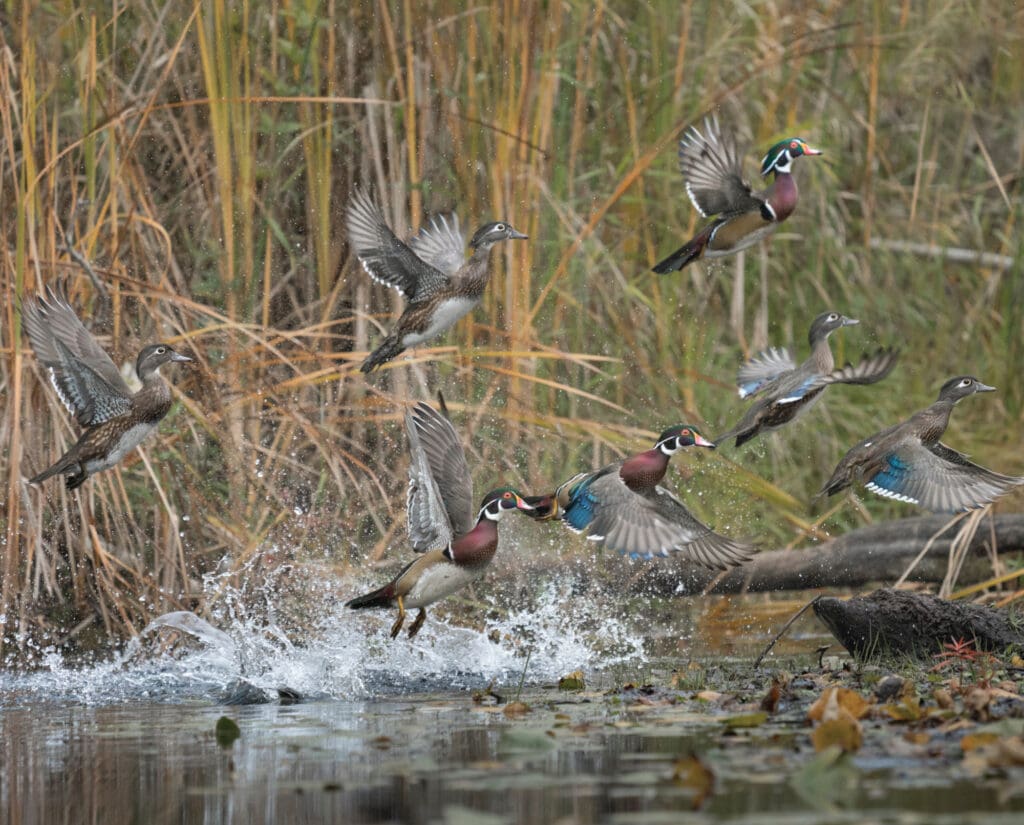
Jump Shooting Wood Ducks
A kayak is the deadliest weapon in a wood duck hunter’s arsenal. With it, you can hunt narrow bodies of water, thread through little creeks so small only an otter could squeeze through, and reach tracts of water you can hardly see on a map. All along the way, you can jump-shoot wood ducks.
Firing at birds from a kayak requires coordination and a lot of stealth. First, a shotgun hitting the hull of a fiberglass or polyethylene kayak makes a clunk so loud that your neighbors back at home will hear it. Pad the edges of your kayak with grass or other material to prevent any unintentional noise. Additionally, it’s important to position your gun at the ready. I like to rest the stock of my gun on or between my legs, and my hands are ready to drop the oar and pick up the gun at any moment. Sometimes, wood ducks kick up right at your feet like a ruffed grouse. That’s why hunting wood ducks from a ‘yak requires an upland hunter’s reaction speed.
Without a kayak, you can still hunt the edge of lakes, ponds, and streams like you would still hunt for deer. It’s less ideal than using a kayak, but it can produce a day’s limit on birds if done right.
Quietly work the water’s edge. Take only a few steps at a time as you circumnavigate the body of water. Wood ducks love to chat, and it’s not uncommon for them to advertise their presence well before you ever see them. Packing a call can help in a situation like this. You can hang tight in some thick vegetation and respond to them, waiting until they swim in sight. Freshwater lakes, streams, and ponds are usually brimming with thick vegetation around their edges. While they can help you hide, they can also make for a challenging stalk as you struggle to keep quiet. Make sure to tie up any loose straps, wear material that makes little noise as it abrades against branches, foliage, and bushes, and always have your gun at the ready. Again, sometimes, you nearly have to step on a wood duck before it bursts from its roost.
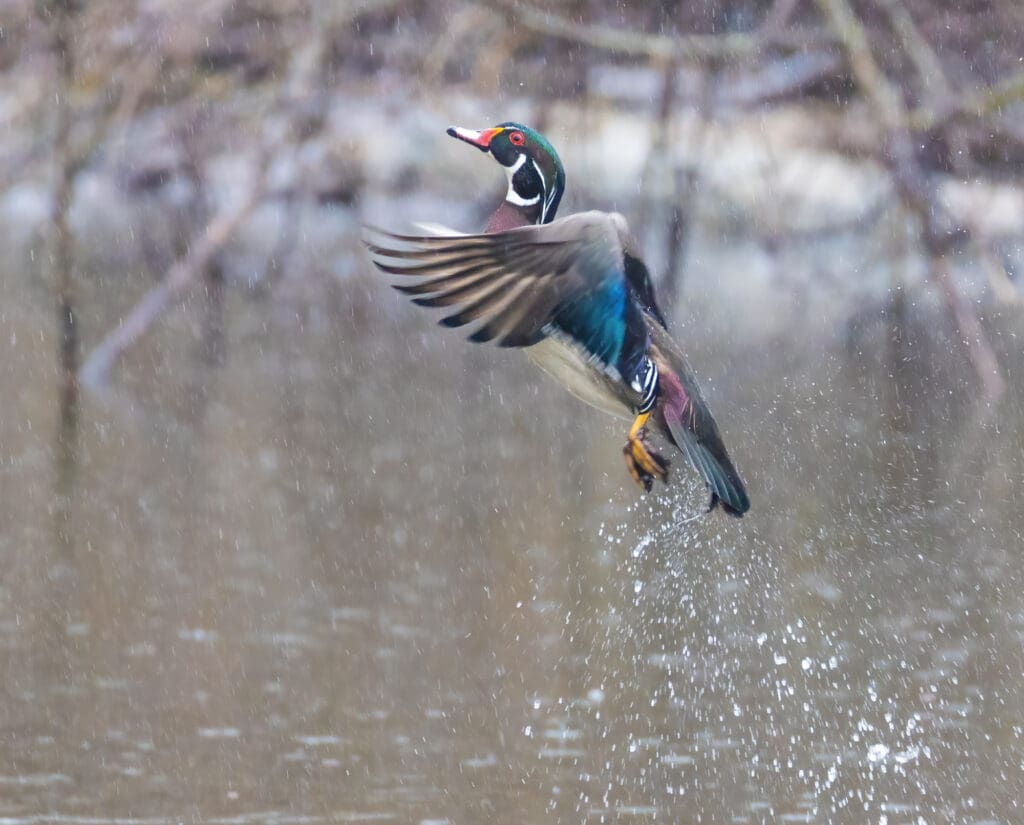
Wood Duck Hunting Decoy Spreads
Ducks like teal often fly in flocks numbering in the hundreds, but wood ducks run with fairly small crews, usually around six individuals at a time. You don’t need to throw out much more for your decoy spreads.
Stick to small decoy spreads ranging from a single male and female pair to a dozen decoys. To bring more life to the spread, thread a jerk string through all your decoys and run the pulling line back to your kayak. Wood ducks are one of the easier birds to fool. Put decoys where the birds already want to be, use your call sparingly, add a little movement, and sit tight and wait. Wood duck hunting is all about patience. While you wait, you get to soak in the sounds and sights of a forest lake coming alive at daylight, and because of that, wood duck hunting is one of the best ways to kick off the early season.
Mike Adams is an outdoor writer, wildlife biologist, and educator hailing from salt marshes of the mid-Atlantic. His work has appeared in numerous outdoor publications, where he uses hunting and fishing narratives to explore deeper issues in conservation or ecology. In the fall, you'll find him on his Barnegat Bay Sneakbox hunting ducks with his dog, Boone. Any other time of year, he's usually out on the salt marsh, catching crabs or fishing for striper.



